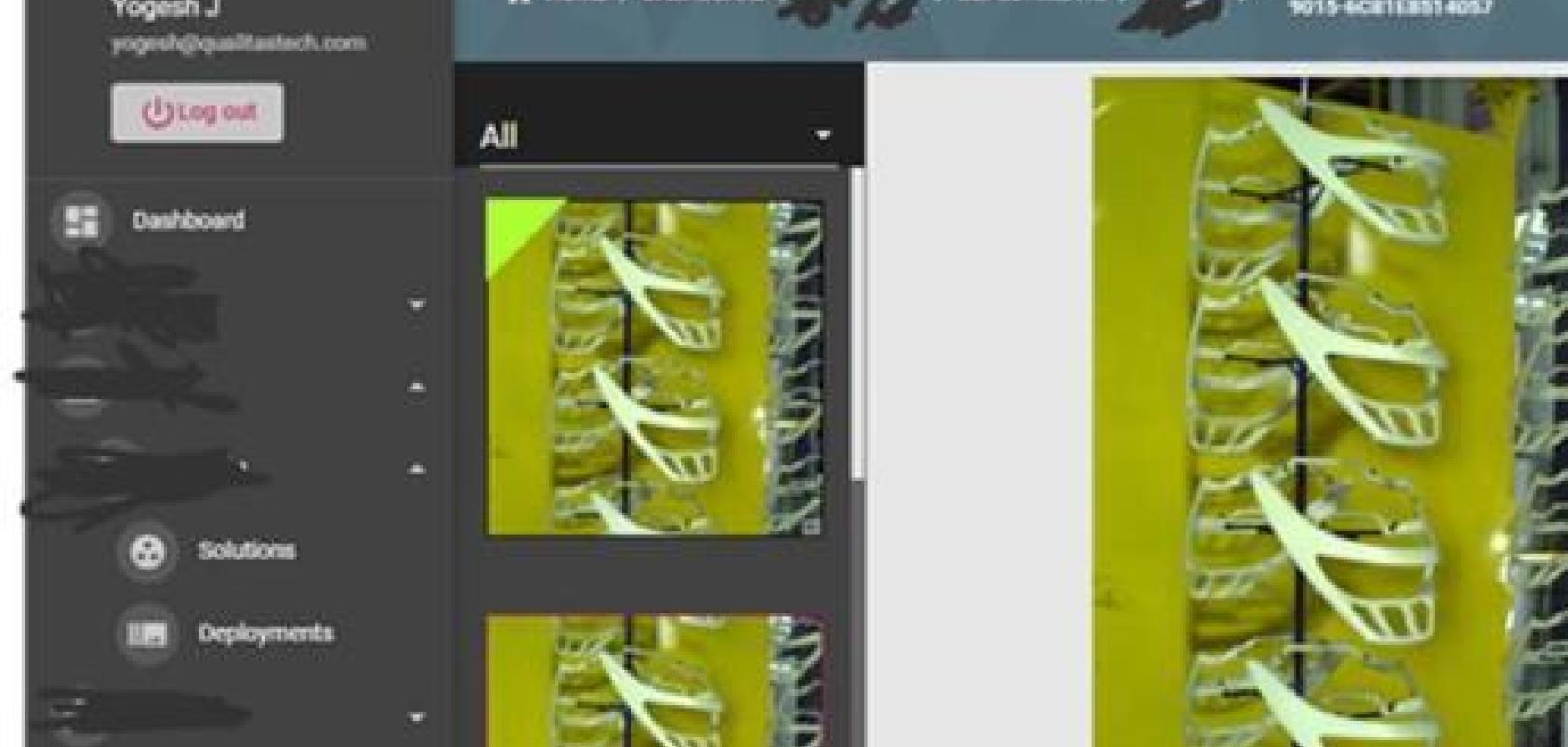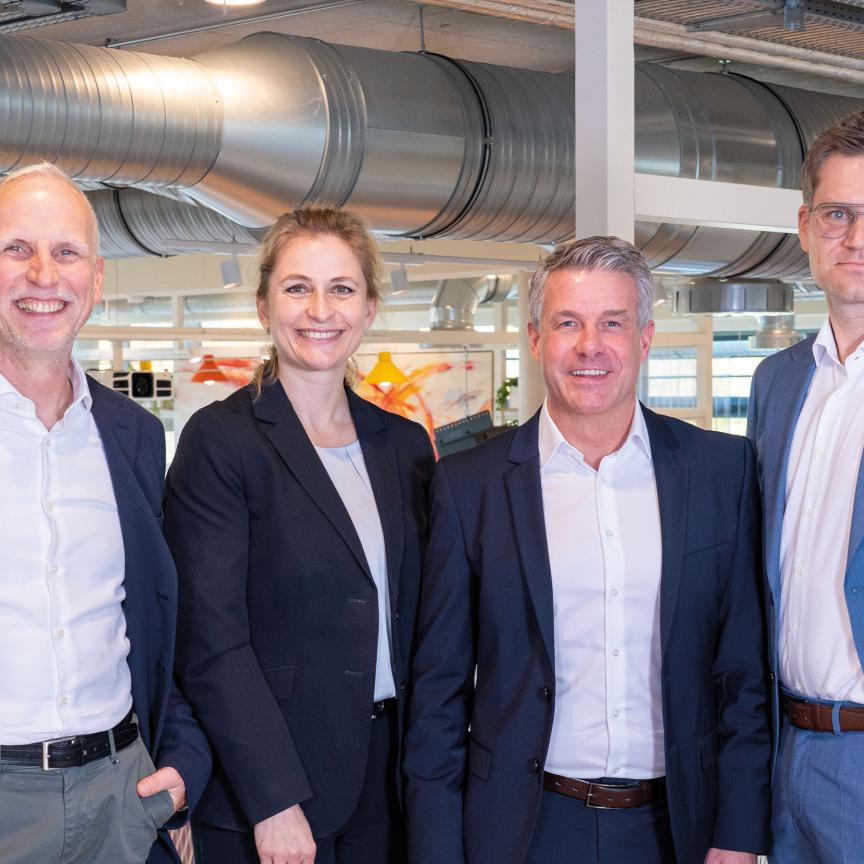Raghava Kashyapa, CEO of Indian vision firm Qualitas Technologies, writes about the benefits and challenges of implementing machine vision in the cloud – and what this holds for manufacturing in India
The industrial sector accounted for about 23 per cent of the gross domestic product of India in 2017. The manufacturing sector in India generates employment, meets various consumer demands and has a growing share in the export market. There are various companies engaged in manufacturing machinery, auto parts, metal and plastic products, and technology products.
Industry 4.0 has an impact on the manufacturing industry. The manufacturing sector can use it to take advantage of opportunities such as robust domestic demand, incentives like ‘Make In India’, and increasing foreign investment. It can also use it to ward off challenges such as a slowdown in certain sectors, trade tensions, competition in certain industries, such as textiles from other countries, and challenges from imports.
Factories in India are adopting cloud technology in different ways as a component of Industry 4.0. Many companies have disparate systems, legacy systems or too much dependence on manual processes. They have already adopted or are working towards implementing cloud solutions to integrate ERP and CRM systems. At the same time, cloud solutions such as cloud storage and analytics tools are being used for reporting, analytics, and collaboration, while enterprise mobility solutions and dashboards are being implemented to access and share real-time information about production processes.
Machine vision in the cloud
The manufacturing sector in India is finding many ways to implement machine vision in different processes. Machine vision systems generate large amounts of data and need high computing power. In addition, various systems have to be connected to make sense and gain insight from the data collected, and it is therefore a natural progression that machine vision slowly gets integrated with cloud technology.
Cloud technology has significantly matured; vision and imaging applications can take advantage of it to give: better privacy and security of data, as data stored in the cloud is encrypted; easy maintenance; the ability to add computing power, storage space or hardware components; and for better analytics.
In addition, the race between cloud computing market leaders such as Amazon Web Services, Microsoft Azure, and Google Cloud has led to better prices and improved technology in a short space of time. Companies can have cost-effective solutions for computation and storage services, which is especially true for deep learning or AI-based systems, where the training hardware costs are quite expensive to maintain as a dedicated machine.
In terms of maintenance, vision system troubleshooting is traditional done on-site. But with cloud connectivity, not only can the accuracy and performance of a vision system be monitored, any corrections and maintenance updates can be deployed easily from the cloud. As an example, Qualitas Technologies uses the cloud to grade inspection images manually to validate how accurate the vision system is running. This is done periodically using a statistically relevant image set to ensure the vision system is performing as expected.
It is also easy to add computing power, storage space or hardware components to cloud solutions to improve the efficiency of machine vision.
Most processes in manufacturing generate millions of data points, which can provide a lot of actionable insight. Users with cloud technology solutions will be able to analyse data better and also process data in real-time – lag time is significantly reduced.
To remain competitive, factories have to minimise the number of defects in their products. The cloud can be used to store numerous images or data points, and if there are issues in production then preventable measures can be taken immediately, such as blocking defective products from leaving the factory.
Finally, cloud-based machine vision allows sensors to provide raw data and deliver a deeper level of interpretation and analysis of data collected. Cloud business analytics solutions can be integrated with data generated from machine vision systems to analyse and identify interesting trends.
Challenges of getting vision into the cloud
Machine vision finds new ways to use data analysis and deep learning provided by cloud computing. But there are challenges for effective implementation of machine vision over the cloud.
Firstly, many organisations are reluctant to manage production process data in the cloud as there can be severe repercussions if data is compromised. Data security and privacy challenges have to be overcome for a complete transition to the cloud.
Secondly, implementation of machine vision into the cloud is a significant investment. There will be changes in business workflows, additional technology costs, and employment costs for personnel to manage the cloud ecosystem. There will also be costs associated with implementing the solution in terms of application development and customisation, data transfer to the cloud, and quality assurance and control. Companies have to perform a cost-benefit analysis and implement only if the return on investment and intangible benefits are significant.
Finally, implementing a cloud-based machine vision solution requires skilled people who are well-versed in both cloud and machine vision technologies. The new solution may lead to transfer of resource cost and time from the core manufacturing process to managing the technology solution. This may not be very effective.
The future
Cloud computing represents a foundational, underlying platform technology to enable smart manufacturing. Cloud computing is already being used widely to automate manufacturing execution, supply chain management and optimisation, and even in product lifecycle management (PLM) systems. Cloud computing is helping manufacturers innovate, reduce costs, and increase their competitiveness.
It’s a matter of time before machine vision solutions also leverage the cloud more widely. Cloud technology provides for massive data storage and analytics capabilities. It also offers machine learning and deep learning abilities. Therefore the merger of machine vision technology and cloud computing will provide an impetus to the machine vision industry in terms of simplified solutions, quicker analytics, deeper insights, larger scale of operation, and ease of maintenance.
--
With headquarters in Bengaluru, India, Qualitas Technologies builds industrial automation solutions, primarily focused on machine vision, to clients all over India. The firm now offers a cloud-enabled platform for machine vision, which provides the entire workflow management from image acquisition to system maintenance.
Write for us
Have you had experience implementing or running vision systems in the cloud? Email: greg.blackman@europascience.com.


